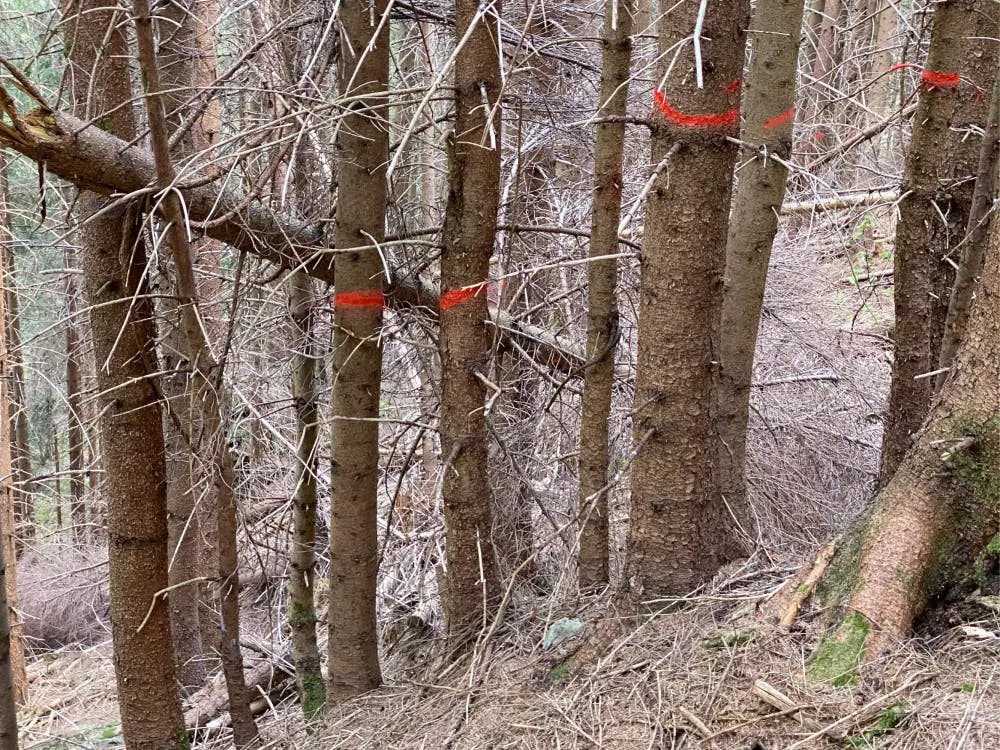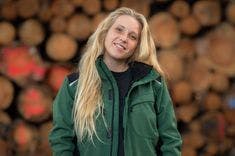As already described in the first part of this blog post series, only 2 % of primeval forest remains in Europe. The rest has been influenced by humans over the centuries. Many forest areas are stocked in a non-natural way and suffer repeatedly from the consequences of climate change due to their low stability and resilience. Non-natural monocultures with excessively high game densities are particularly susceptible to damaging events and require very high investments from forest owners in order to be converted into near-natural forests. This blog post takes a closer look at the challenges and risks facing European forests.
Learn more about
-
The problems surrounding non site adapted monocultures, high game densities and more frequent damaging events
-
The tricky situation of European forest owners
-
The need to monetize ecosystem services with the help of Tree.ly
Non site adapted stands
Every root plant has a certain tolerance range with regard to climate and soil. For example, the natural growth range of conifers, in particular spruce in Central Europe, is at higher altitudes and nutrient-poor sites ¹. Other nutrient-rich sites at lower altitudes, on the other hand, are predominantly occupied by deciduous trees.If trees are planted on sites that do not correspond to their natural habitat, they are referred to as "non site adapted" ².
The European forest landscape has been changed by humans over the last few centuries. According to the University of Vienna, every square meter of forest in Austria has been influenced by humans ³. In order to meet their wood requirements, people have always planted trees that grow quickly, are easy to process and easy to maintain. These are mainly conifers such as spruce. In recent centuries, many forest areas have been afforested with non-native tree species - primarily conifers ⁴. Due to its excellent processing properties and versatility, spruce is the most important tree species in Europe. At the same time, the large-scale secondary locations of spruce, usually planted in monoculture, harbor many risks ⁵. These became clear during the extreme weather events of recent years, for example, spruce, as a typical shallow-rooted tree species of the mountains, is at high risk of windthrow on periodically moist sites and suffers from drought stress on many other lowland sites ⁶.
Low biodiversity
Forests that consist of only one tree species can be described as "monocultures" and can be described as very homogeneous. The trees of the same age of one species are usually not only in rows, but also have a single layer, with all treetops at the same height. If the middle and lower layers, as well as standing and lying deadwood, are missing, an internal forest climate develops, which severely limits the habitat for various species and thus the biodiversity ⁷. Multi-layered stands are of enormous importance, especially for various bird species, which act as key species in many native ecosystems ⁸. For example, the various woodpecker species create habitats by building breeding cavities, which can subsequently be used by other animal and plant species ⁹. In non site adapted coniferous forests, the needle litter leads to acidification of the soil, as the needles decompose only with difficulty and over a longer period of time ¹⁰. In combination with sudden strong light incidence, for example after large-scale use, this can lead to heavy grassing of the forest floor. Seeds brought in from outside by the wind or animals rarely germinate due to the thick carpet of grass. This impairs the development of the forest area into a mixed stand ¹¹.
Excessive game density
The active and natural mixing of forest plants is hampered in many places by high populations of hoofed game ¹² ¹³. Due to the dwindling habitat and the increasing disturbance caused by human influence, game seeks refuge in the forest. For example, the natural habitat of red deer is the open countryside near the forest. However, due to the high and increasing land use, it is increasingly forced to move into the forest, where it causes damage ¹⁴.
The food supply is particularly high in the summer months due to the widespread availability of energy-rich agricultural crops. In winter, however, the fields are harvested and the game must seek food and shelter in the nearby forest stands. The young, naturally or actively introduced shoots of mixed tree species are preferentially browsed and the bark of poles or young trees is particularly prone to being peeled. In many forest areas, natural development into mixed stands would be possible through seed introduction even in monocultures. As a result of high game densities, however, the seedlings are directly browsed, so that no new forest generation can grow ¹³.
Damage events
Forest stands can become unstable without a diverse species and age structure. As soon as droughts or storms occur, for example, the resistance of the stand is put to the test. If the forest stand is already suffering from drought stress or a previous damaging event, weakened individuals can be more easily attacked by pests such as beetles or moths. Monocultures of the same age provide the best habitat for pests that prefer certain tree species, of certain ages, in large numbers ¹⁵. As a result, and due to rising temperatures, mass reproduction and loss of entire forest stands can often occur ¹⁶.
In a cultural landscape such as Europe, forest owners must take action in the event of such damaging events and ensure good forest management. If the damaged wood is not debarked or transported out of the forest by processing, neighboring forest stands can also be infested ¹⁵ ¹⁶. However, fast and efficient processing of damaged wood requires a good forest infrastructure ¹⁷. Due to difficult topographical conditions and a lack of financial resources, forest owners are often unable to take full action.
Forest owners under pressure
Forest owners are facing a major challenge these days. Due to climate change, environmental extremes are becoming more frequent and forest stands are increasingly under threat. Non-site adapted Monocultures, with low biodiversity and damaging influences from wildlife, are susceptible to damaging events and represent a high risk for forest owners. For this reason, forests must be actively converted into site-adapted mixed stands. This requires high investments in more expensive planting material, in the maintenance of the forest stand, game management, browsing protection, but also working time - to name just a few examples.
At the same time, these monocultures cover the demand for coniferous wood of the citizens and thus secure the income of many forest owners. The switch from softwood to hardwood means that the future income of the farms is uncertain. The wood processing industry is dependent on softwood and hardwood cannot yet provide a complete substitute ¹⁸. Even if forest owners decide to actively convert the forest into a mixed stand despite the uncertain future of the business, they lack the necessary financial resources.
In addition to this predicament, forest owners are increasingly exposed to a social debate. On the one hand, society wants to visit beautiful, near-natural forests that are as untouched as possible. On the other hand, the demand for sustainable wood products is increasing. The challenges in the forest are therefore not only increasing with the advance of climate change. Ideally, all forest functions (utilization, recreation, welfare and protection) can be combined in one area. However, this requires additional income alongside traditional timber harvesting.
Tree.ly makes it possible to monetize the ecosystem services provided by forests and supports forest owners with additional income, which in turn must be contractually reinvested in the forest. In addition, Tree.ly promotes public understanding of active and sustainable forest management. You can find more information about our projects in our portfolio.
Sources: all publicly available.
-
1: Fachagentur Nachwachsende Rohstoffe e. V. (Link, 25.03.2024)
-
2: PEFC Schweiz 2020 (Link, 25.03.2024)
-
3: Theresa Dirtl 2011 (Link, 25.03.2024)
-
4: Wissenschaftlicher Beirat für Waldpolitik 2021 (Link, 25.03.2024)
-
5: NABU (Link, 25.03.2024)
-
6: Bundesforschungszentrum für Wald 2013 (Link, 25.03.2024)
-
7: Oliver Granke (Link, 25.03.2024)
-
8: Susanne Winter Et al. (Link, 25.03.2024)
-
9: Bayerische Landesanstalt
-
für Wald und Forstwirtschaft (Link, 25.03.2024)
-
10: Amt der Oö. Landesregierung (Link, 25.03.2024)
-
11: Bayerische Landesanstalt für Wald und Forstwirtschaft (Link, 25.03.2024)
-
12: NABU (Link, 25.03.2024)
-
13: Göttinger Forstwissenschaften (Link, 25.03.2024)
-
14: Deutsche Wildtier Stiftung (Link, 25.03.2024)
-
15: Eidg. Forschungsanstalt WSL (Link, 25.03.2024)
-
16: Österreichisches Kuratorium für Landtechnik und Landentwicklung (Link, 25.03.2024)
-
17: Amt der Oö. Landesregierung (Link, 25.03.2024)
-
18: Fachagentur Nachwachsende Rohstoffe e.V. (Link, 25.03.2024)



